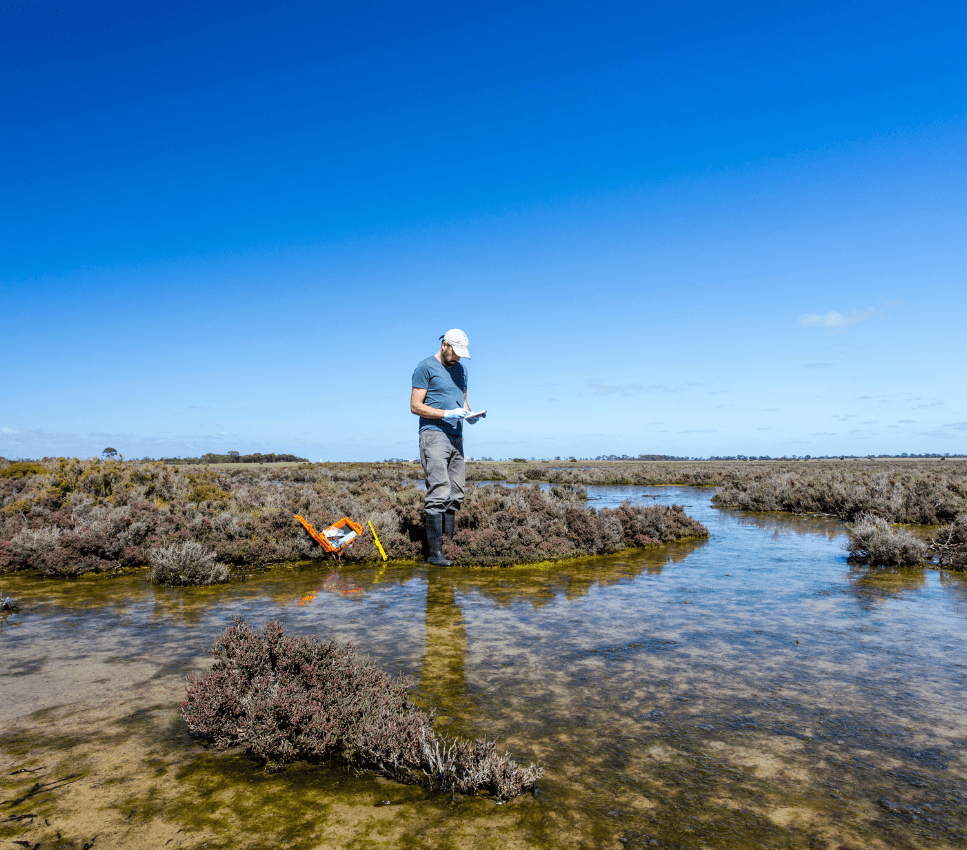
Stroud Water Research Center (the Stroud Center) started in 1967 as a multidisciplinary field research station to explore threats and solutions to healthy streams and rivers. Today
the Stroud Center continues to advance knowledge and stewardship of freshwater systems through global research, education, and watershed restoration. Today the Stroud Center continues to advance knowledge and stewardship of freshwater systems through global research, education, and watershed restoration.
The Stroud Center has eight Ph.D. scientists that are leading a variety of research based on evolving questions that impact the health of freshwater systems. To understand how sediment moves or how pesticides degrade or how groundwater is affected by agriculture, the Stroud Center collects an enormous amount of data from multiple sources over long periods of time. “Monitoring watersheds requires diligence and consistent measurements over decades. Quality assurance and control of this data for easy access to visualize trends and get what we need when we want it, is where Aquarius comes in,” said Ensign.
Using Aquarius, researchers can arrange and analyze data and find relationships between such things as sediment flux, dissolved oxygen and discharge of the stream to determine the health of a river.

An Explosion of Data Requires Solid Management
There has been a tremendous revolution in the collection of water data in the last 10-15 years. Research centers can collect high-frequency data at a fraction of the cost it used to be – the end result is a lot of data. The challenge is no longer the collection of data, but rather maximizing the value and use of this information.
“Twenty years ago, it would have taken a huge budget to collect the amount of data we are gathering today. The development of lower-cost data collection systems enables not just professional scientists but citizen scientists and organizations like the Delaware River Watershed Initiative to deploy sensors throughout areas of interest. In collaboration
with other partners, we created the Monitor My Watershed Data Sharing Portal which streams data to the web from about 120 sites across the Delaware River basin every five
minutes,” said Ensign.
The Stroud Center then pulls this data into Aquarius for quality control, error detection, documenting of changes and allowing for automatic bias corrections. Alerts can also
be configured to warn researchers of unusual events or issues related to the monitoring equipment.

Monitoring Salt Contaminants Flow
A recent discovery that came out of the Delaware River Watershed Initiative was the degree to which road salt moves through the environment – washing into watersheds
in the winter and coming up in groundwater in the summer. With so many sensors, placed throughout the community, watershed organizations gained an unprecedented
microscopic view of the data which delivered hard evidence on locations where salt application is a problem and where it isn’t. Sharing this information allows communities to
advocate for change to protect their watersheds.
The Stroud Center also studies contaminants in watersheds and has partnered with the Center for PFAS Solutions in Delaware to provide data on where PFAS is originating and how it is moving through the environment. Data on the movement of insecticides, such as neonicotinoids is another important area of monitoring as they are commonly used and overapplied resulting in a series of negative effects on ecosystems.
As forests process much of the planet’s carbon, their survival is our survival, so it’s imperative that we understand how it functions on different scales so that we can better predict the health of forests in 10, 20, 50 or 100 years plus, as we face the effects of climate change.

Taking Hydrological Education to New Heights
In the 1990s the Stroud Center expanded the sharing of its research with k-12 educators, students, researchers, agency personnel and citizen scientists by developing educational
resources and providing on-site and remote instruction. The Stroud Center’s Education Department is led by educators and environmental education researchers who ensure
that resources and curricula comply with state and federal learning standards.
The Stroud Center has successfully expanded on its three pillars – research, education and restoration – using Aquarius to manage and analyze scientific data so researchers and educators can take the data and create meaningful change. The Stroud Center is also a recipient of the Ripple Effect, a software grant from Aquatic Informatics that will enable them to use the new interface as well as the new and modern rating review tool for the rating curves.

